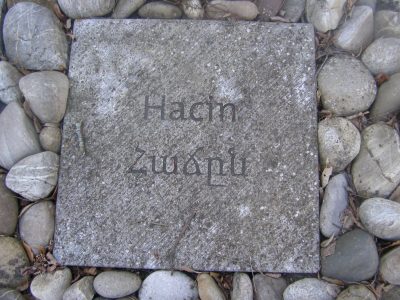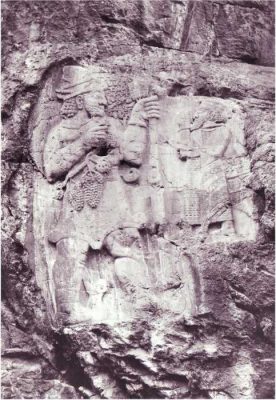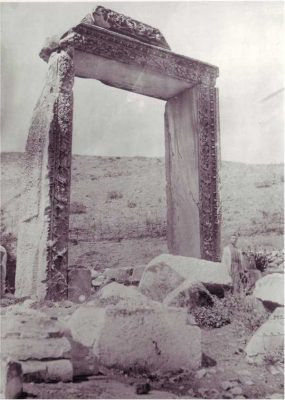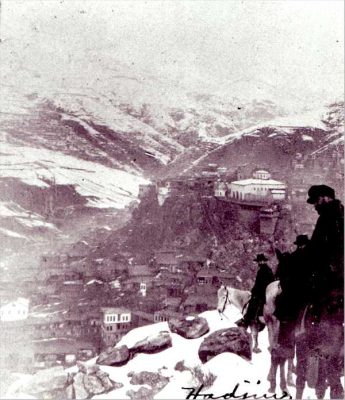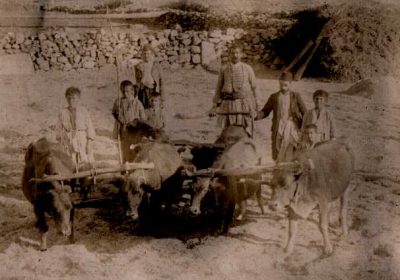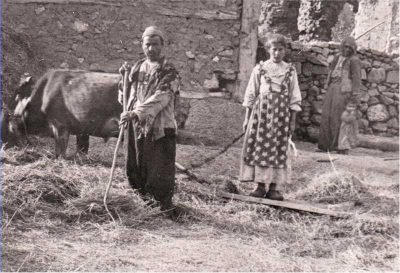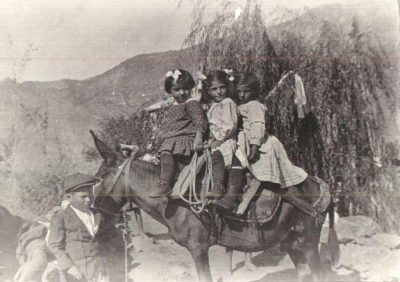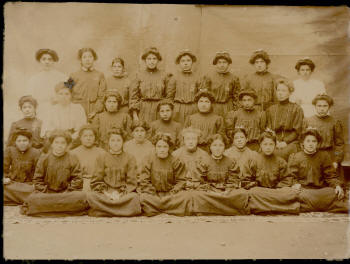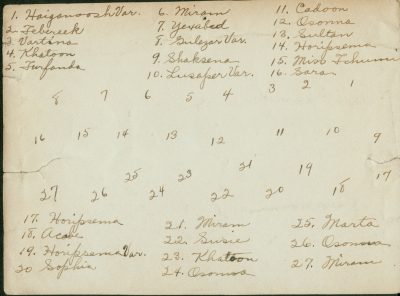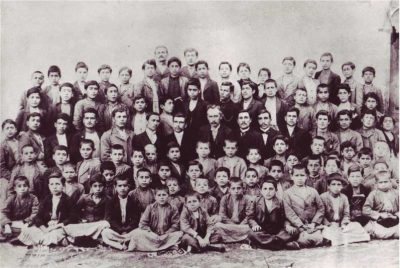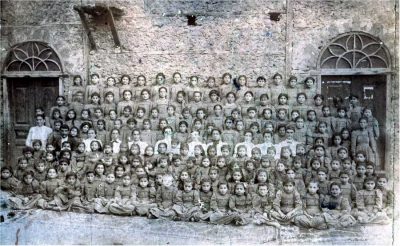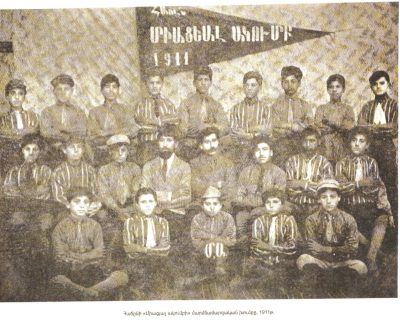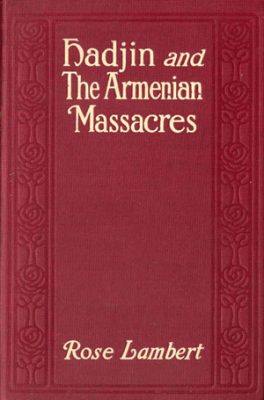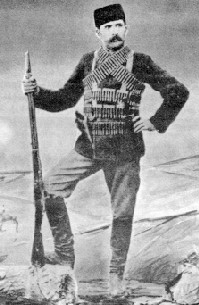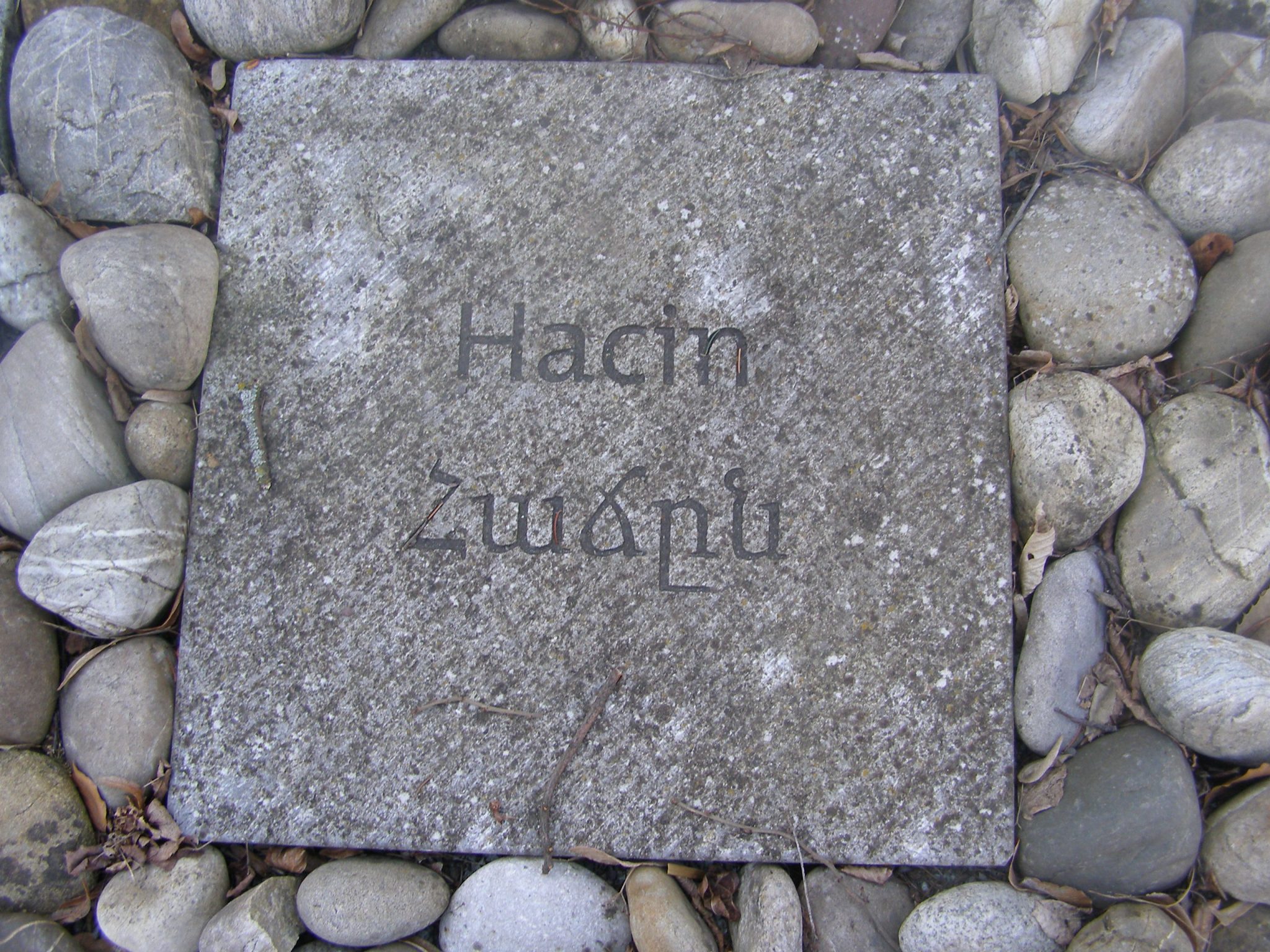
Hadjin (now Saimbeyli), a town in historic Upper Cilicia, is located in the central Tauros Mountain range on a triangular hill at an altitude of 1140 meters above sea level, on the right bank of the Saros River. Located on the overland road from Cilicia to Cappadocia, the town of Hadjin was fortified since ancient times. The fortress of Hadjin may be the medieval Badimon or perhaps the castle of Berdus, which appears on the Coronation List of King Levon I of Cilician Armenia in A.D. 1198/99. This fortress, which guards the strategic road between Kayseri to the north and the Rubenid castle of Vahka to the south, stands on an outcrop at the junction of two valleys and two tributaries of the Seyhan River.
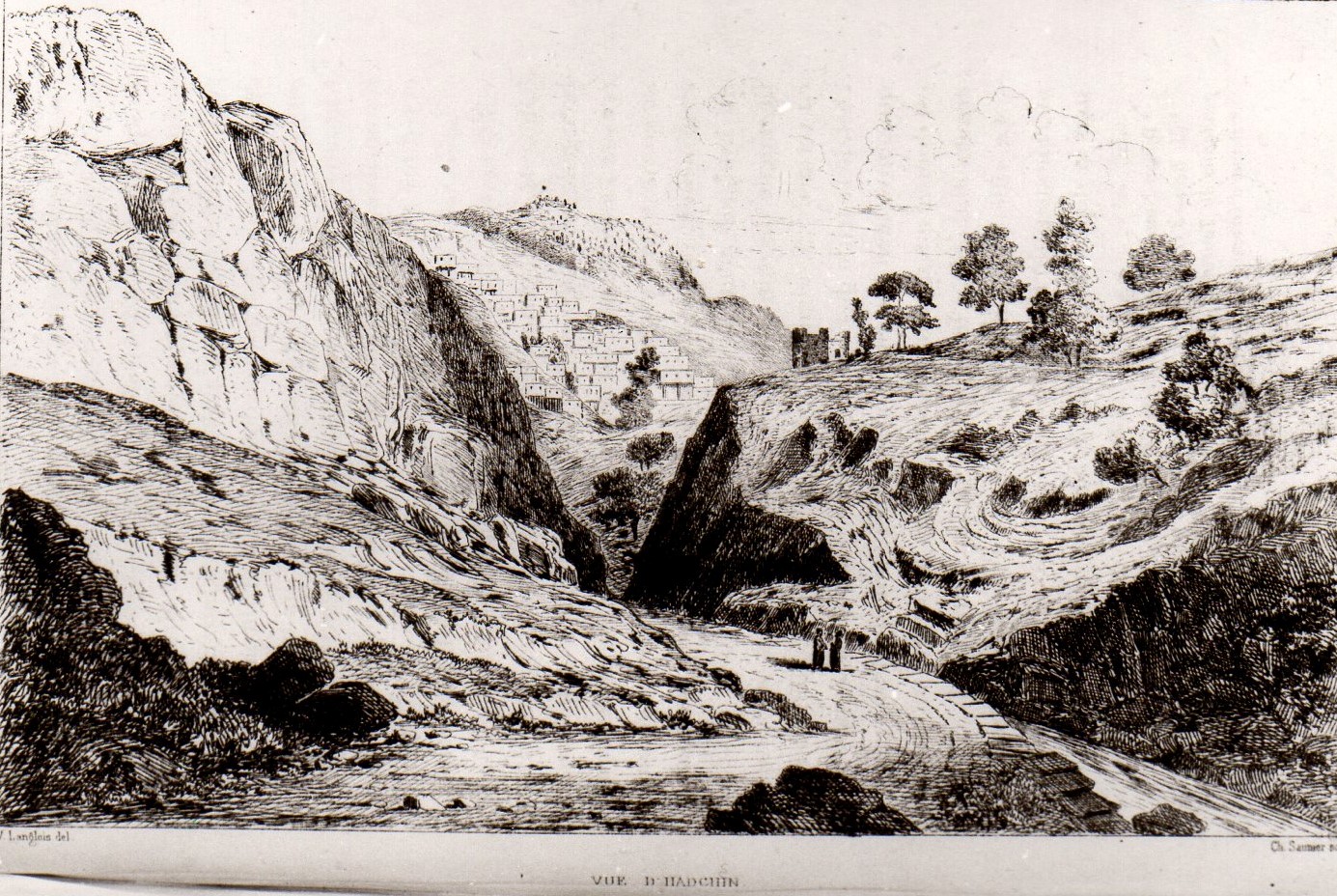
Toponym
Perhaps the Armenian name is composed of a corruption of the toponyms Haragan and Ashe (a river). Following the Kemalist conquest of 1920, the Armenian toponym was replaced by Turkish Saimbeyli.
Armenian Population
According to the census of the Armenian Apostolic Patriarchate of Constantinople, on the eve of the First World War there lived 27,850 Armenians in five localities of the kaza. They maintained eight churches, a monastery, and four schools with an enrolment of 577 pupils.[1]
Four hours north of the town of Hadjin, Rumlu (comprising the three villages of Köroğlu, Seki, and Kuşkaya), “lost in the forests of the Antitaurus, had an Armenian population of 250. On the northern boundary of the kaza, Şar, the antique Comana, had an all-Armenian population until 1915 (pop. 1,120).”[2]
History
It was a Roman settlement (the ruins of its fortress of the 1st century B.C. are preserved), which later became part of the Byzantine empire and the Armenian state of Cilicia. In the 11th century Armenians founded Surb Hakob Monastery. After the fall of the Armenian Kingdom of Cilicia (1375), a large number of Armenians from Lower Cilicia settled in Hadjin.
In the 15th century, the town was occupied by the Ottomans. In 1915 the Armenians of Hadjin were forcibly displaced and exiled to Der Zor, where most of them were killed. In 1919, about 8,000 survivors returned to their hometown, but the French government ceded all of Cilicia (including Hadjin) to Turkey. In March 1920, Kemalist troops besieged Hadjin, where the Armenian population turned to vigorous self-defense. Other survivors have taken refuge in different countries.
Town of Hadjin
Hadjin, the seat of the kaza of same name, was located in the valley of the Saros River (Trk.: Seyhun) on a rock spur that lay on the intersection of two valleys. A mountain fortress par excellence, it was well suited for self-defense.
Population
In 1914, the Armenian population of the seat of the kaza was 13,550 according to the Ottoman census. However, the diocesan statistics, “which were corroborated by missionary sources, indicate that the town of Hacın alone had an Armenian population of 26,480.”[3] According to other estimates, in 1915 the Armenian population in Hadjin alone was even 30,000 (out of a total population of 35,000).[4] The residents of Hadjin mainly engaged in crafts and trade. The Armenians of Hadjin were turkophone, using Armenian letters.
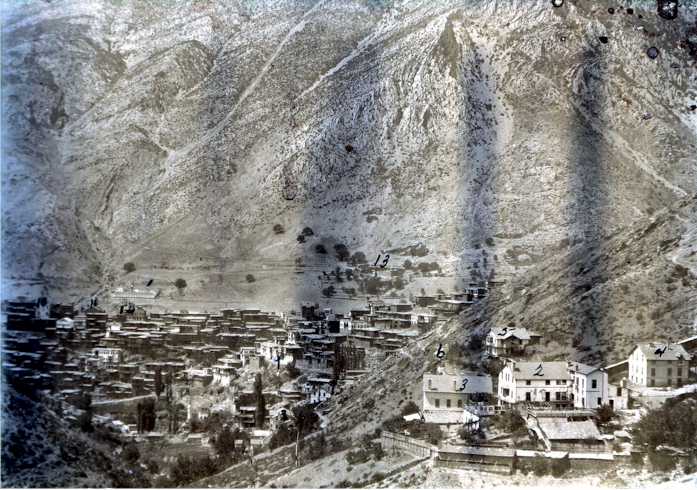
3. Girl’s School; 4. Rev. Martin’s Home; 5. First Church Rectory; 6. Our Good Road (Copyright H.M. Keshishian 2006; http://www.hadjin.com/Annotated_Picture_of_Hadjins_Eastside.htm)
The Armenians had schools adjacent to the six churches, of which the Sahak-Mesrobian school was famous. Outside the city, there was a boarding school in Surb Hakob Monastery. Three churches belonged to the Armenian-Apostolic community: Surb Astvatsatsin (Holy Mother of God), Surb Gevorg and Surb Toros. Surb Astvatsatsin, founded around 1425, was the oldest church, built in the historical fortress of Hadjin (Hadjin Berd). It was located in the Upper District of Hadjin, as well as the cathedral of Surb Gevorg, which was built in the 19th century on a small chapel of the same name. Located in the Yagh District, Surb Toros is thought to be the former Greek Orthodox church of Hadjin, which has been armenized over time.
The first Armenian Catholic Church was built near Hadjin Berd, but was destroyed in the great fire of 1884.
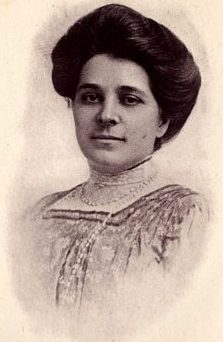
Then, in the early 1900s, it was rebuilt with other community facilities, as well as a school for boys and girls. The first Protestant church was built in 1867 in the Upper District. In 1889, a second Protestant Church was built in the Lower District.
It should be noted that Hadjin was an important Missionary Center, where foreign Missionary orphanages, and especially schools, were active alongside the Protestant churches. The presence of foreign mission employees also led to significant eyewitness accounts on the 1909 massacres (Rose Lambert) and the 1915 genocidal events (Edith Cold).
The monastic complex dedicated to St. James (Surb Hakop) is perched on the side of a tall hill at the northwest end of Hadjin, near the springs. In 1981 the foundation of an orphanage school was visible and only the east end of the large Church of St. James was standing. There was evidence of an underground crypt below the central apse of the church. The monastery was fortified by strong walls. It was a popular place of pilgrimage and had many estates. The monastery is the oldest Armenian evidence of Hadjin, founded in 1004 along with other important Armenian monasteries in the region when the Armenian population of Cilicia increased considerably after the fall of Ani. The monastery was rebuilt in 1554 by Bishop Khatchadur and renovated in 1900. During the last renovation, an orphanage was added.
The monastery has been a place of pilgrimage throughout its millennial history. The special day of the covenant was the day of St. James, when the Armenian residents of Hadjin climbed the hill of the monastery and spent the night there. The monastery was destroyed during the Adana massacres of 1909, but was renovated as a school and served the people of Hadjin until their final evacuation from Cilicia.
Further Reading:
Rose Lambert: Hadjin, and the Armenian Massacres (1911). http://armenianhouse.org/lambert/hadjin/index.html
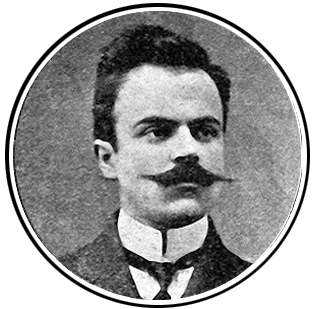
Notable Armenians
- Hambartsum Boyadjian (Համբարձում Պօյաճեան; nom de guerre: Murat, Mets Murat – Murat the Great; 1867-1915), Armenian fedayi, leading member of the Hnchak party; member of the Ottoman parliament since 1908; genocide victim
- Hakob Terzian (Յակոբ Թերզեան, 1879-1915), Armenian pharmacist and writer; genocide victim
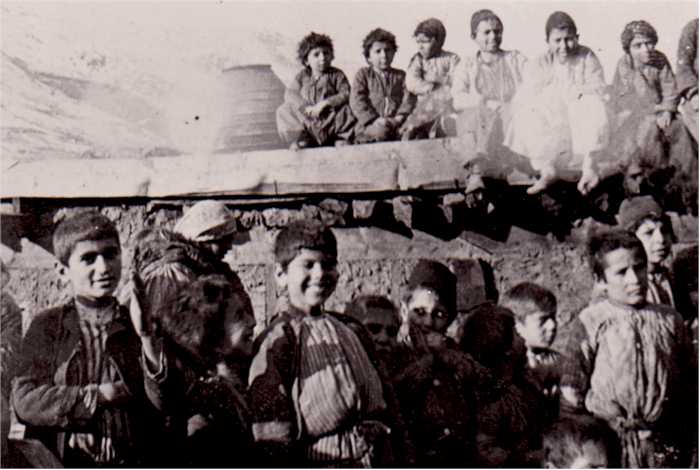
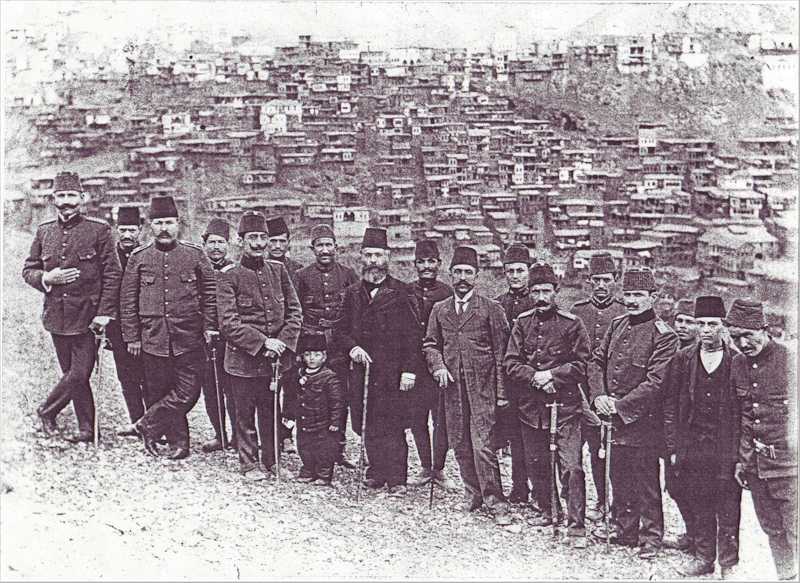
Destruction
Sis and Hadjin were the two Armenian towns in the sancak of Sis which successfully self-defended during the Adana massacres of 1909.
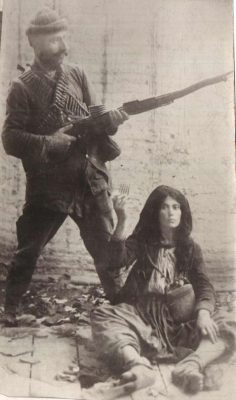
Therefore, in 1915, the authorities focused on these two cities. In Hadjin, an official provocation occurred as early as January 1915: A leaflet prepared by the chief of police calling the Armenian population to “vigilance” and “self-defense” was posted in the courtyard of Surb Gevorg Cathedral by Armenian youth Aram Boyajian and served as a pretext for the arrest of 35 high-ranking members of the Armenian Socialist Hnchak Party; eleven of the arrestees were sentenced to death and hanged for “rebellion” at the court martial in Adana, and the rest were sentenced to life in exile.
Although the Armenian population complied with the official request of 18 May 1915 and handed over 70 weapons, although on 23 May 1915 the deserters surrendered to the authorities, from 27 May onwards 250 notables were arrested, most of whom were imprisoned in the Surb Hakob monastery and were systematically tortured. On 3 June 1915, the general deportation order was issued, but, as in Sis, the general deportation of the population was carried out in stages: The first convoy included only the 30 most important Apostolic and Protestant
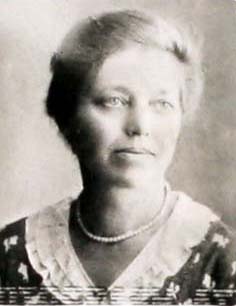
Armenians, including the Armenian employees of the American mission. On June 10, another 150 families were deported. By early October 1915, just a few artisans and their families, as well as 250 widows and wives of soldiers remained. The deportees had to take the road over Kiraz Mountain instead of the more comfortable road over Sis, obviously because this road was not drivableby wagons. They were deported via Osmaniye and Aleppo to Ras-ul-Ayn, Dair-az-Zor, Rakka and Meskene. Only 5,000 of the more than 28,000 Armenians of the kaza Hadjin survived the deportations.
According to the testimony of U.S. missionary Edith Cold, the mufti of Hadjin refused to condone the deportations and even took custody of the assets of his Armenian friends. The U.S. missionaries had refused to provide this assistance to the Armenians because they had not received instructions to do so from their superiors..[5]
“In the other Armenian localities in the region, especially Şar and Rumlu, the deportations took place shortly after the beginning of operations in Hacin.“(6)
Memoirs of a survivor
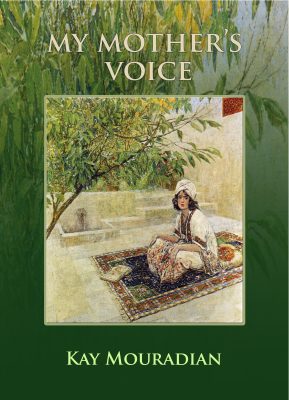
Prof. em. Kay Mouradian recounts her mother’s fate as a book and in a documentary film about Hacin:
The link to the film’s trailer: (one minute) is http://www.youtube.com/watch?v=Kad0VzWzxgA
Password to vimeo My Mother’s Voice (25 minutes)
https://vimeo.com/83815659; password: momsvoice
The documentary has been endorsed by the National Council for the Social Studies.
